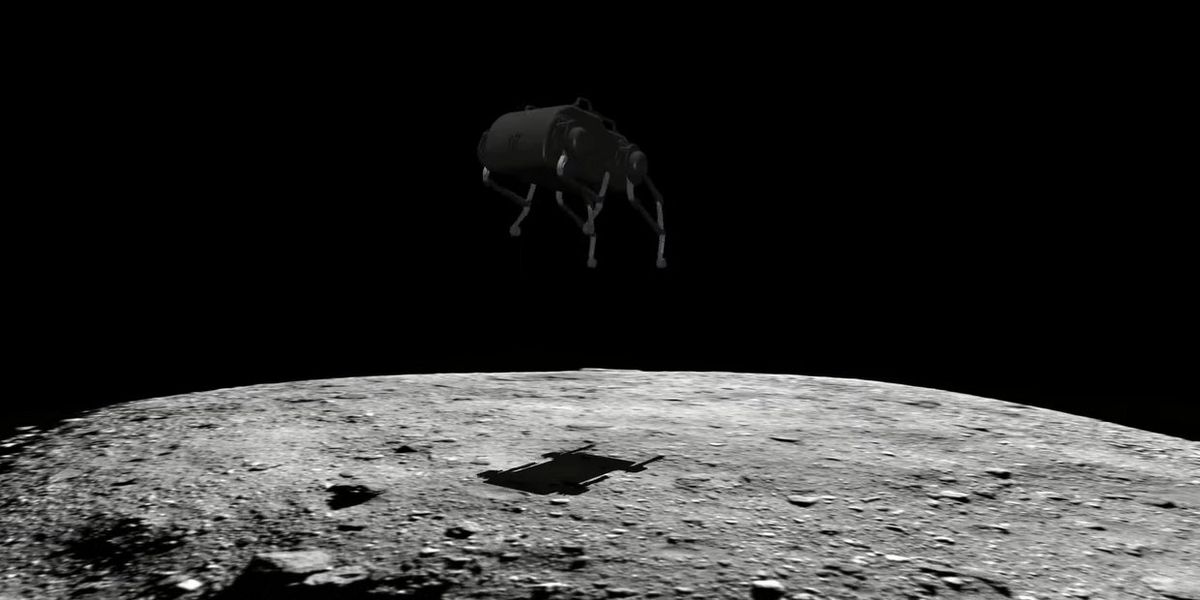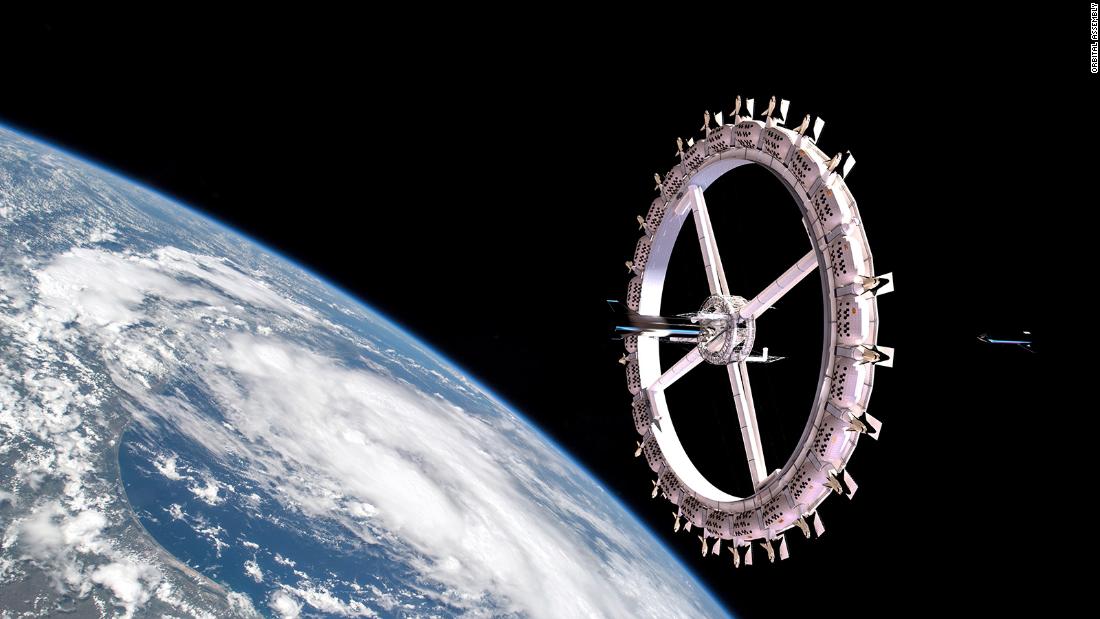Install the app
How to install the app on iOS
Follow along with the video below to see how to install our site as a web app on your home screen.
Note: This feature may not be available in some browsers.
You are using an out of date browser. It may not display this or other websites correctly.
You should upgrade or use an alternative browser.
You should upgrade or use an alternative browser.
Avaruus
- Viestiketjun aloittaja Juke
- Aloitus PVM
tulikomento
Supreme Leader
Filmiä Neuvostoliiton BOR-4- ja BOR-5-avaruuslentokoneiden paluusta kiertoradalta ja koneiden nostosta neuvostoaluksiin Intian valtamerellä.

ISR satellite systems to attract more than 50% share of global military satellite market by 2031, says GlobalData - GlobalData
The growing importance of information-based warfare and a huge demand for real-time situational awareness is expected to propel the intelligence, surveillance and reconnaissance (ISR) satellites...
Here on Earth, we’re getting good enough at legged robots that we’re starting to see a transition from wheels to legs for challenging environments, especially environments with some uncertainty as to exactly what kind of terrain your robot might encounter. Beyond Earth, we’re still heavily reliant on wheeled vehicles, but even that might be starting to change. While wheels do pretty well on the Moon and on Mars, there are lots of other places to explore, like smaller moons and asteroids. And there, it’s not just terrain that’s a challenge: it’s gravity.
In low gravity environments, any robot moving over rough terrain risks entering a flight phase. Perhaps an extended flight phase, depending on how low the gravity is, which can be dangerous to robots that aren’t prepared for it. Researchers at the Robotic Systems Lab at ETH Zurich have been doing some experiments with the SpaceBok quadruped, and they’ve published a paper in IEEE T-RO showing that it’s possible to teach SpaceBok to effectively bok around in low gravity environments while using its legs to reorient itself during flight, exhibiting “cat-like jumping and landing” behaviors through vigorous leg-wiggling.
Also, while I’m fairly certain that “bok” is not a verb that means “to move dynamically in low gravity using legs,” I feel like that’s what it should mean. Sort of like pronk, except in space. Let’s make it so!

Legged Robots Do Surprisingly Well in Low Gravity
SpaceBok boks around on simulated asteroids, using its legs to keep oriented and under control
 spectrum.ieee.org
spectrum.ieee.org
IEEE Spectrum: Why are legs ideal for mobility in low gravity environments?
Rudin: In low gravity environments, rolling on wheels becomes more difficult because of reduced traction. However, legs can exploit the low gravity and use high jumps to move efficiently. With high jumps, you can also clear large obstacles along the way, which is harder to do in higher gravity.
Rambo
Majuri
Tähtitieteilijät havaitsivat ensimmäistä kertaa mustan aukon nielaisevan neutronitähden – Törmäystä ”voi verrata pisteitä syövään Pac-Maniin”
Kansainvälinen yli tuhannen tähtitieteilijän ryhmä on ensimmäistä kertaa koskaan havainnut mustien aukkojen syövän neutronitähtiä, uutisoi
 tekniikanmaailma.fi
tekniikanmaailma.fi
Tähtitieteilijät havaitsivat ensimmäistä kertaa mustan aukon nielaisevan neutronitähden – Törmäystä ”voi verrata pisteitä syövään Pac-Maniin”
Fremen
Greatest Leader
Upeita kuvia...

 www.rmg.co.uk
www.rmg.co.uk

Astronomy Photographer of the Year 2021 shortlist images
See the shortlisted images from the world's greatest space photography competition
tulikomento
Supreme Leader
Sojuz 11:n kosmonautit kuolivat 50 vuotta sitten.

 www.tekniikkatalous.fi
www.tekniikkatalous.fi
Päivälleen 50 vuotta sitten kolme kosmonauttia kohtasi tuskaisen kuoleman aluksen syöksyessä kohti Maata, eikä mitään ollut tehtävissä
30.6.1971, Georgi Dobrovolski, Vladislav Volkov ja Viktor Patsajev kuolivat palatessaan Maahan ennätyksiä rikkoneen avaruuslennon jälkeen.
Miten voi olla että Wirtasen mukaan nimetty komeetta on pysyvästi pienessä sievässä? 


Comet 46P/Wirtanen was releasing an unusual amount of alcohol as it made its historic flyby of Earth two and a half years ago. That's one of the findings from the latest published study comet detectives conducted after observing 46P/Wirtanen with W. M. Keck Observatory on Maunakea in Hawai?i.
"46P/Wirtanen has one of the highest alcohol-to-aldehyde ratios measured in any comet to date," said Neil Dello Russo, a cometary scientist at Johns Hopkins University Applied Physics Laboratory and co-author of the study. "This tells us information about how carbon, oxygen, and hydrogen molecules were distributed in the early solar system where Wirtanen formed."
Keck Observatory data also revealed a strange characteristic. Normally, as comets orbit closer to the Sun, the frozen particles in their nucleus heat up, then boil off, or sublimate, going directly from solid ice to gas, skipping the liquid phase. This process, called outgassing, is what produces the coma - a giant cloak of gas and dust glowing around the comet's nucleus. As the comet gets even closer to the Sun, solar radiation pushes some of the coma away from the comet, creating the tails.
With comet 46P/Wirtanen however, the team made a strange discovery: Another process beyond solar radiation is mysteriously heating up the comet.
"Interestingly, we found that the temperature measured for water gas in the coma did not decrease significantly with distance from the nucleus, which implies a heating mechanism," said co-author Erika Gibb, professor and chair of the Department of Physics and Astronomy at University of Missouri-St. Louis.
Gibb says there are a couple possible explanations. One is a chemical reaction where sunlight may be ionizing some atoms or molecules in the dense coma close to the nucleus, releasing high-velocity electrons. When these super-charged electrons collide with another molecule, they can transfer some of their kinetic energy and heat the water gas in the coma.
"Another possibility is there may be solid chunks of ice flying off of 46P/Wirtanen," said Gibb. "We've seen this in some comets visited by spacecraft, notably Hartley 2 during NASA's EPOXI mission. Those ice chunks tumble away from the nucleus and sublimate, releasing energy further out in the coma."

Abnormally high alcohol and mystery heat source detected on Comet Wirtanen
Maunakea HI (SPX) Jul 01, 2021 - Comet 46P/Wirtanen was releasing an unusual amount of alcohol as it made its historic flyby of Earth two and a half years ago. That's one of the findings from the latest published study comet detect
www.spacedaily.com
Viimeksi muokattu:
rty19
Greatest Leader
Avaruusturismi alkamaisillaan. Alan kahden firman johtajat lisäävät uskoa teknologiaansa lentämällä avaruuteen oman yrityksensä ratkaisulla.
Ensimmäisenä Virgin Galacticin Richard Branson 11.7. Sen jälkeen Blue Originin Jeff Bezos 20.7.

 www.cnbc.com
www.cnbc.com
Ensimmäisenä Virgin Galacticin Richard Branson 11.7. Sen jälkeen Blue Originin Jeff Bezos 20.7.

Virgin Galactic to launch Richard Branson on July 11, aiming to beat Jeff Bezos to space
Branson is aiming to beat fellow billionaire Jeff Bezos to space, as the latter plans to launch with Blue Origin on July 20.

The Space Force Has its First Marines -- and Soldiers and Sailors
The U.S. Space Force announced it has selected its first small group of soldiers, sailors and Marines who will transfer permanently into the sixth military branch.
Space Marines?
The Space Force Has its First Marines -- and Soldiers and Sailors
The U.S. Space Force announced it has selected its first small group of soldiers, sailors and Marines who will transfer permanently into the sixth military branch.www.military.com

Suomen puolustushallinto on mukana myös kuudessa muussa projektissa, joille komissio on myöntänyt rahoitusta. Projekteihin lukeutuvat muun muassa avaruustilannekuvan kehittämiseen liittyvät projektit SAURON sekä Odin’s Eye.

Yhdeksän EU-maata aloittavat tulevaisuuden panssaroitujen ajoneuvojen kehittämisen
Puolustusministeriö.
Space Marines?
Not yet.
Avaruusturismi alkamaisillaan. Alan kahden firman johtajat lisäävät uskoa teknologiaansa lentämällä avaruuteen oman yrityksensä ratkaisulla.
Ensimmäisenä Virgin Galacticin Richard Branson 11.7. Sen jälkeen Blue Originin Jeff Bezos 20.7.

Virgin Galactic to launch Richard Branson on July 11, aiming to beat Jeff Bezos to space
Branson is aiming to beat fellow billionaire Jeff Bezos to space, as the latter plans to launch with Blue Origin on July 20.www.cnbc.com
Melkosta avaruusturismia ku 4minsaa ollaan yli 100km rajan !
 Ainakii toisessa siis näin enkä kovin kummoisia odota tältä katkeralta Jeff Bezosiltakaan. Suuttui pahasti kun hävisi Nasan soppareita ison kasan SpaceX:lle. Ois kannattanut Jeff todistaa edes jollain härvelillä et pystyt toimimaan vakuuttavasti mut kaikki vakuuttavat on edelleen vaan haaveita. Se lentävä Penis ei oo oikea raketti sit millään tavalla. Katsotaan jos se joskus saa raketin millä oikeasti pääsee avaruuteen
Ainakii toisessa siis näin enkä kovin kummoisia odota tältä katkeralta Jeff Bezosiltakaan. Suuttui pahasti kun hävisi Nasan soppareita ison kasan SpaceX:lle. Ois kannattanut Jeff todistaa edes jollain härvelillä et pystyt toimimaan vakuuttavasti mut kaikki vakuuttavat on edelleen vaan haaveita. Se lentävä Penis ei oo oikea raketti sit millään tavalla. Katsotaan jos se joskus saa raketin millä oikeasti pääsee avaruuteen 
Olympiakasarmi
Kenraali
Ehkä sitten joskus ...

 edition.cnn.com
edition.cnn.com

Inside the space hotel scheduled to open in 2025
Orbital Assembly Corporation is planning to build Voyager Station and Pioneer Station, two space hubs in the sky. The company says its space stations are the future of space tourism.
 edition.cnn.com
edition.cnn.com

On kyll komia ja julmatun kokoinen toi SpaceX:n uusi boosteri. Veikkaan et meidän ei tarvitse kovin kauan odottaa et suorittavat ensimmäisen kunnon lennon tälläisellä. Siel on paikalle tuotu jo eka raptorin vakuumimoottorikii jo tuossa oisko about viikko takaperin(?). Ihan järjetön on kyll toi vauhti millä toi Starbase (Boca Chica) muuttaa muotoaan. Viikon aikana tapahtuu ihan uskomaton määrä asioita kun katselee kuvia jotka on otettu ylhäältä alueesta. Ei meinaa houhuissa pysyä edes !
tulikomento
Supreme Leader
Intia kaavailee miehitettyä lentoa.
